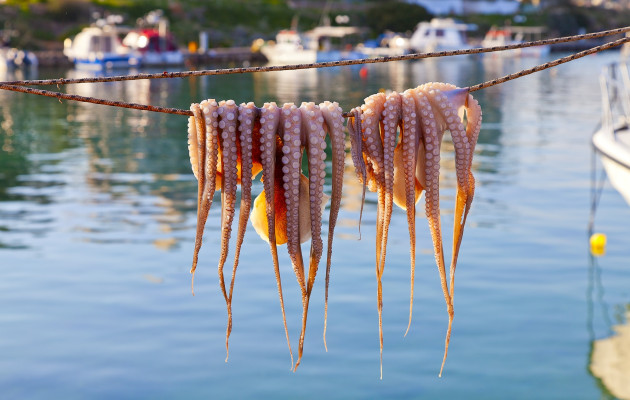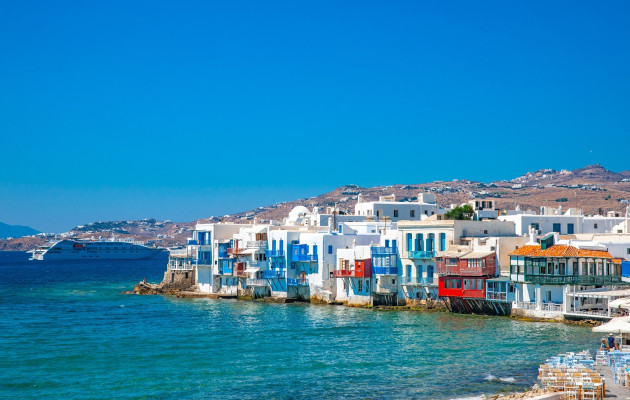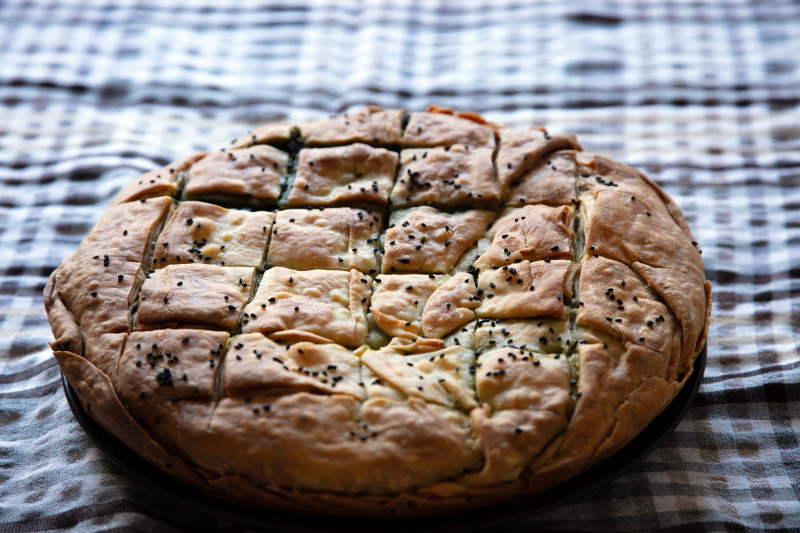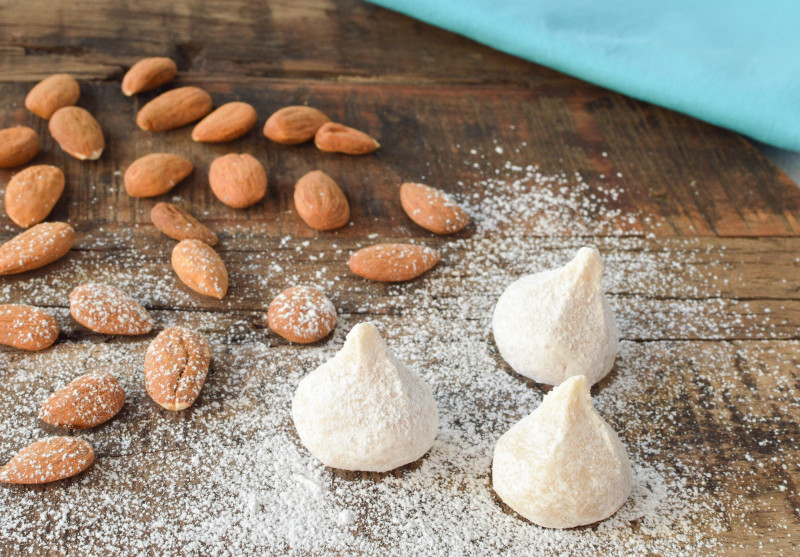Eleni Psychouli takes us on a journey through the flavors of our country and guides us around Greece. On this trek we go to Mykonos
The hero Mykonos of antiquity gave her his name, however, her city Mykonosas we know it, was founded during the Venetian occupation. In 1390, the Venetians gave the baton of the island to the Turks, and with the Orlof revolution, Mykonos became Russian for four years and at the same time undertook to supply the Russian fleet with its delicious nut – or galeta, as they called it then. During the time of the Turkish occupation, it developed into a powerful naval force, the one that would effectively fight the conquerors under the orders of Mantos Mavrogenous and Topazis. In those years the island was full of corsairs and pirates, fear and terror of the Aegean islands.
A crossroads of cultures, the island has assimilated into its culinary tradition techniques adapted to the frugality of the Mykonian diet. An arid place, with pelagic winds plaguing its land, Mykonos feeds on its few vegetables, its limited livestock and what the sea generously gives it. A society of poor and hard-working people who had to contend with the elements of water and earth, the Mykonians were never rich.
Their kitchen is the simple everyday kitchen of survival. Sailors, breeders, bakers. Their dishes have no elaborate techniques to show off. Simple kitchen, without frills. Everything needed for the family to survive, with the housewife cooking the food of the day in the rudimentary ma’erio, the gas stove, the petrogas, the wood oven. Behind, however, the apparent poverty, hides the richest, the noblest, the truest delicacy. The one to which haute gastronomy, which now knows that the new luxury is not the French and other techniques but the old seed of the waterless, sugar-sweet tomato, the fresh fish when eaten as soon as it comes out of the bottom, the bread from raw barley when it is baked on the aromatic mountain bread in the wood-fired oven.
Fried fish with the taste of iodine, the fragrance of pure oil, the grains of sea salt. Mykonos, in spite of its tourist development, still nurtures the taste of authenticity in its food, even if there are no longer many donkeys that roam the cobbled streets in the morning selling the “organic” vegetables of the day.
The ancient custom of slaughtering pigs, from October to December every year, provides the family’s meat and no piece goes to waste. The pig becomes lard, sausage, synglin preserved in the fat, glin that flavors the eggs and onion pie, ribs that are flavored with thrumbi and oregano and “roasted” in the air, and especially louza and bouboulo, the most delicate cured meat of the Aegean. On the days of the slaughter, the pig’s head is made into soup with lemon on the table, the livers are fried, the minced meat is cut by hand and made into meatballs, the lungs and sweet potatoes are cooked in stew.
The Mykonian loves the wild mountain greens, knows their deliciousness and despises none: provasias, ascolymbros, galassides, lapathas, purple coconuts, cousounades, stamnagathia, radishes, aporichia (brubes), zochos, alendris, wild asparagus and delicious capers are boiled like lemon salad, cooked with beans, pickled, omelette or fricassee.
Among the products that characterize the island, one cannot miss the 4 characteristic cheeses that, depending on the maturation, start from sour milk, fresh cheese and sour cheese to reach the unique, spicy kopanista.


Local products
Kopanisti Mykonos (P.O.P)
Kopanisti is also made by other Cycladic islands, but the Mykonian one stands out for its hot, intensely spicy taste due to the repeated fermentation of the local sheep’s milk. Creamy and peppery, it can be mixed with butter or some other white cheese for a softer effect, however alone, on a barley nut with some cucumber or tomato, according to the Mykonian way, it is an ideal accompaniment to ouzo. The same goes with the glina, the congealed pork fat that softens her slop.
Luza
With its roots in the pig carcasses of antiquity, the louza is made from local pork backs together with its little fat, which after first drying in the winter north and the sun, matures in clay pots in salt, pepper and aromatic thyme and oregano. The “small” louse or “boubulo” is even more tender as it is made from sirloin. With a dark rose-red color and rich aromas, lousa is the most special product of the island.
Sausages
They are traditionally made from the little pig that the family slaughters every Christmas. With a higher content of pure meat than fat, Mykonian sausages are seasoned with salt, thyme, allspice, oregano and pepper. They prefer simple grilling.
The sour cheese
You simply rub it over thick pasta sauteed with butter, for the most dreamy pasta of tradition. Xinotyra is nothing but goat’s milk cheese that is dried for several weeks until it becomes hard as stone and also goes perfectly with summer grapes and watermelon.
Cheese shooting
Soft, fresh goat’s milk cheese, a key ingredient of the Mykonian onion pie. It tastes wonderful in the village salad with the local capers, it is eaten alone with sourdough bread, but it is also made into a sweet pouch with honey and cinnamon.
The dishes of tradition
*Azonaras: the traditional New Year’s Eve dish: pork knuckle preserved in salt and cooked with wild herbs.
*Samples with a beater: the barley nut, the bipyrite bread of the ancients, served with a pestle and tomato.
*Dairy: the cheese curd dissolves with a little water and when it becomes a thin paste, break a nut into small pieces.
*Onion Pie: two thick handmade leaves filled with onions, dill, cheese and egg. Another version of the onion pie is filled with scallions, scallions, green onions and cheese balls. Sometimes they replace the oil with clay.
*Gingerbread: pie filled with sugar, cottage cheese, honey, eggs and plenty of cinnamon.
*Black-eyed “frying” (cooking a material in vinegar with onions) black-eyed fish are boiled with rice and served as a thick soup with fried onion in a vinegar and flour sauce.
*Garlic Pasta: Spaghetti with cracked nuts served with garlic, oil and tomato sauce.
*Lamb chords: the staple of the Resurrection table: balls of intestines boiled together with lamb’s tripe and poached.
*Eggs with lera, which is the skin of the milk. The eggs are fried in a skin that acts like butter.
*Green fried tomatoes: the green tomatoes that fall by themselves from the plant, are floured, fried and accompanied with wine.
*Pichunia soup: the little wild pitchunias become soup with tomato and fine pasta.
*Little birds in the clay: the small birds caught by the hunter are fried in clay, seasoned with bay leaves and preserved in pork fat.
*The Mykonian kakavia: its secret is the large content of different fish and a little juice. For relish, potatoes, onion and celery.
*Fried octopus balls: incredible meze made with the pulps, the bags with the ink of the octopuses. Their insides are fried in flour and extinguished with vinegar.
* Almonds: the most typical sweet of the island, made with almond hearts flavored with flower water.
*Boiled mutton and mashed potatoes: the festival dishes.
If you want to know more
Read his book Dimitris Rousounelou “Mykonian Cooking” from “INDIKTOS” publications. All the forgotten flavors of the Mykonian tradition, with their history and secrets, experiential and given in a way that evokes emotion and awakens their taste on your palate, behind the words.
Testing on the spot
*In a traditional alley of Chora, the Monogiou family cooks the Mykonian tradition, in Maternity her. Samples, tomato meatballs, fried snails, rice with petals and crabs. (N. Kalogera 16, 2289028825)
*And yet, the old, classic, authentic cafe still survives in Gialos and makes magical omelettes, mostra, grilled local sausage and fish of the day straight from the nets of the fishermen who make up its most loyal clientele. His coffee BakuyaGialos, 2289023552.
Local recipes from Mykonos
Onion pie
For the leaf
600 gr. flour
4 tbsp olive oil
1 tbsp butter
1 tbsp baking powder
1 egg
a little salt
For the filling
1 kg of cottage cheese
2 eggs
2 dry onions finely chopped
1 bunch of dill
salt and pepper
Implementation
Knead all the ingredients of the dough well with a little warm water until we get a soft dough that does not stick to the hands and is easily shaped.
We leave it covered to “rest” for half an hour.
Mix well all the filling ingredients together in a bowl.
Grease a pan and roll out half the dough on the first and largest sheet that we will spread on the bottom.
Divide the filling between them and cover with the other sheet.
Grease the surface, score the pie and bake it at 180 degrees for 1 hour.
Macaroons
1 kg of blanched almonds
½ kilo of sugar
5 eggs
1 tbsp rose water
powdered sugar and flower water for sprinkling
Implementation
Grind the almond in the blender. Attention: it should not be made like flour but with grain, like semolina and a little coarser.
Break the two eggs into a bowl and the yolks from the other three.
Add the almond, flower water and sugar and knead well.
Shape the macaroons to the size of a walnut.
Bake them at 200 degrees for 15-20 minutes.
Let them cool, sprinkle them with floral water and sprinkle them with powdered sugar.
Source: Skai
I have worked as a journalist for over 10 years, and my work has been featured on many different news websites. I am also an author, and my work has been published in several books. I specialize in opinion writing, and I often write about current events and controversial topics. I am a very well-rounded writer, and I have a lot of experience in different areas of journalism. I am a very hard worker, and I am always willing to put in the extra effort to get the job done.












